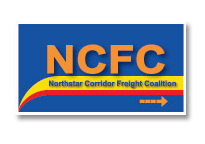SAFETEA-LU Deja Vu?
Tue, 07/06/2010Like its predecessor, notwithstanding its 9/30/2009 expiration date, SAFETEA-LU has been blessed with multiple extensions now running through year end 2010 and almost certainly faces further extension(s) into 2011. Is Congress going to get serious about "the Surface Transportation Authorization Act"?
The March 2010 HIRE Act – short for “Hiring Incentives to Restore Employment Act” (HR 2847) – took the SAFETEA-LU extension out through 12/31/2010 and moved $19.5 billion from the General Fund to the Highway Trust Fund to keep transportation infrastructure construction afloat. That presumably gives Congress another eight months to work on reauthorization or, in any case, until the next round of extensions.
Sen. Boxer announced in March that the Committee on Environment and Public Works, which she Chairs, will use as the starting point the House Transportation and Infrastructure Committee bill, circulated by Chairman Oberstar (Summer 2009) but not introduced. Great starting point. Oberstar's bill did not touch funding. That would have been left to Appropriations.
Some how it seems more likely that Sen. Boxer will be using her spare time to get re-elected. Equally election conscious, the Obama administration has reiterated its opposition to a fuel tax increase. That leaves both short and long term funding just about nowhere – maybe the same place they were going with that bridge in the last authorization.
US DOT has an encore for the TIGER – short for “Transportation Investment Generating Economic Recovery” – grant funding. The last TIGER grants, funding those “shovel ready” projects, were awarded in 2/2010. The National Infrastructure Investments (“NII”) grant program has $600 million more to be awarded by year end. NII grants, a/k/a TIGER II, have broader eligibility requirements than TIGER I. Many of the losing projects will be in the running for TIGER II. Eligibility includes not only highway and bridge projects but also transit, passenger, and freight rail and port infrastructure.
This process might be a little more rational than pure Congressional earmarking. The winning projects must have “a significant impact on the Nation, a metropolitan area, or a region.” This is possibly something like, maybe a weak sister of, the component CCFC has been promoting as essential for creating a national Interstate and Defense Transportation System.



